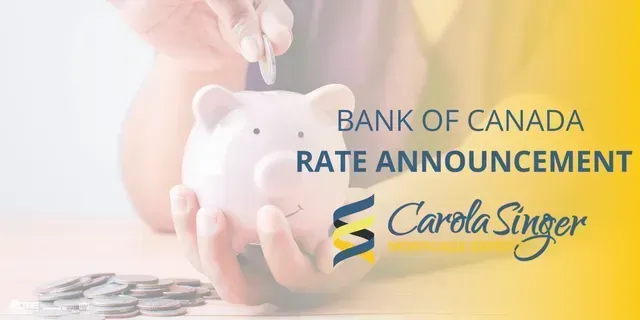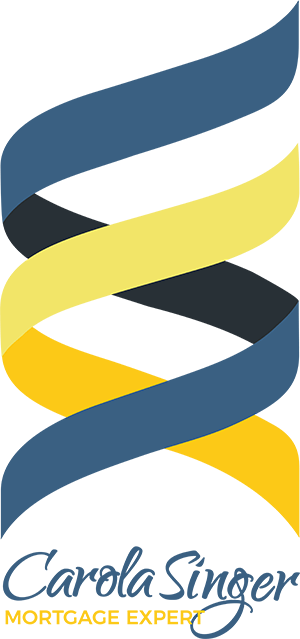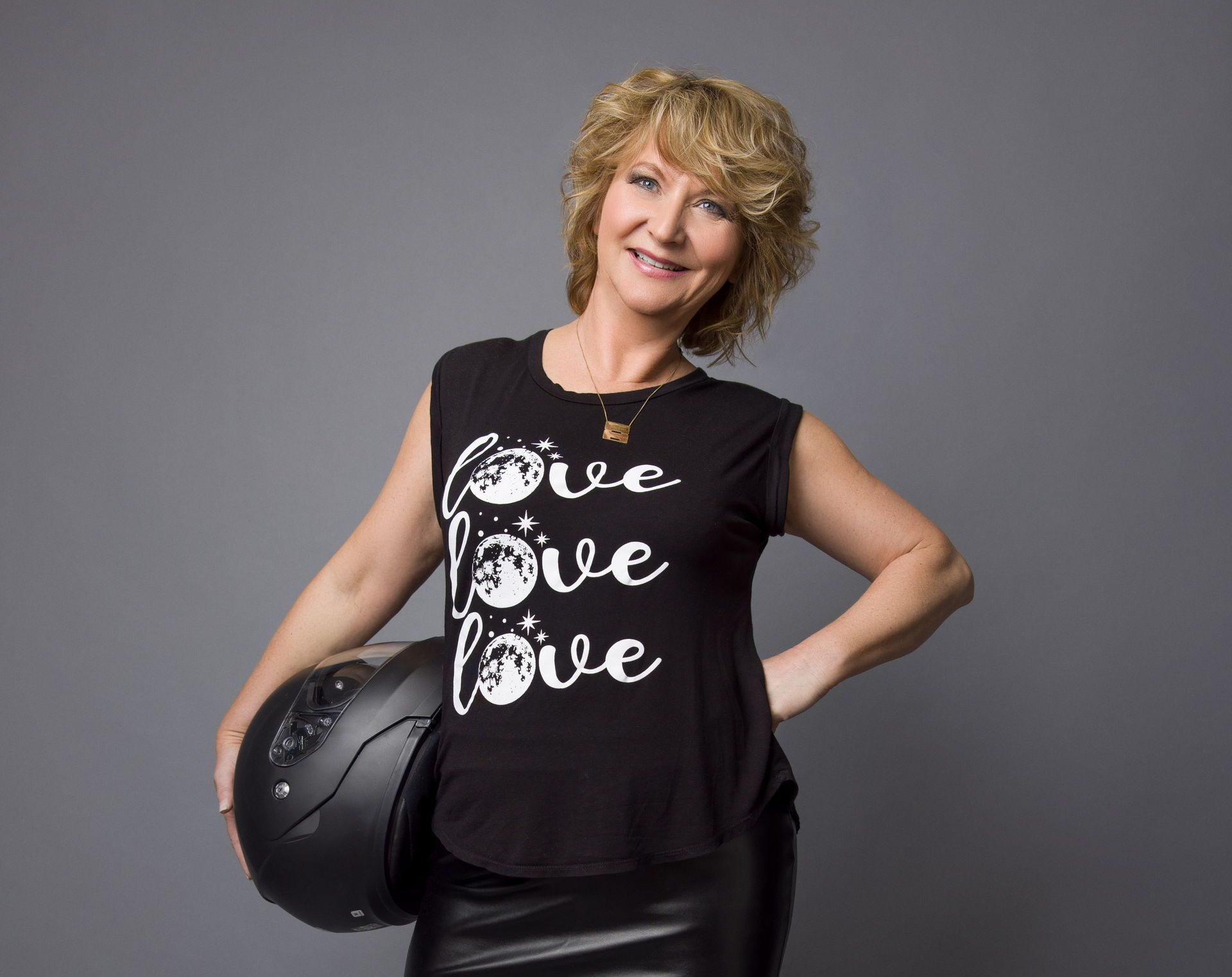Mortgage Financing in a Competitive Housing Market.
Carola Singer • February 24, 2021

Canada is an interesting place to buy a property right now. If you’ve paid attention to the media at all over the last few weeks, you’ve probably heard that…
- Many people are still out of work due to COVID-19.
- The bank of Canada has forecasted rates will stay low for a long time.
- Although house prices keep rising, we may be in for a housing crash sooner than later.
While more recently, the media is reporting that…
- Canadian house prices are hitting record highs with no stop in sight.
- There is very little inventory available in housing markets across Canada.
- This week, bond rates have started to rise, and we can likely expect lenders to follow with an increase in fixed rates.
Needless to say, things can change pretty quickly. And while talking about the “Canadian housing market” is a lot like talking about the “weather in Canada”; it varies regionally and will be significantly different depending on where you live, one thing seems to be true, if you’re looking to buy a property, you can expect a competitive housing market.
Some markets will be hotter than others, but buying a home in a competitive housing market can be difficult.
You know you’re in a hot housing market when…
- Properties sell within days of listing on MLS.
- Properties are selling at or above the asking price.
- Properties are selling with competing offers.
- Properties are selling with competing offers well over the asking price.
Unfortunately, this can make you feel…
- Rushed to make decisions out of your comfort zone.
- Like you are being priced out of the market.
- Like you won’t ever find a property.
- Like you may need to change up your strategy to prevent being outbid by competing offers.
Now, if you get to this point in your home buying journey, you might begin to feel desperate. Understandably so. You might even look for ways to get your offer accepted and consider taking risks you wouldn't otherwise take. You may even consider (or be encouraged to) submit a subject-free offer.
While writing a subject-free offer might seem like a good solution to get your offer accepted, you need to know that it comes with significant risk. The biggest risk you take is that your deposit could be forfeit if you write an unconditional offer and your financing is declined.
The only time a subject-free offer is without risk is when you have enough money to purchase the property with the cash you have in the bank. So if you don’t have the cash to buy the house outright, the smart move is to mitigate your risk by including a “subject to financing” clause in the offer to purchase.
Mortgage financing is never guaranteed. The reason mortgage financing isn’t guaranteed is that securing mortgage financing is not only dependent on you the applicant, but also on the condition and value of the property. So even if you have the most stable income, an incredible credit history, and a large downpayment, if you need a mortgage, all lenders will assess the property’s condition and value before agreeing to mortgage financing.
Their scrutiny of the property is the same regardless of whether you include a subject to financing clause or make your offer unconditional.
Unfortunately, if you’re in a competitive situation, this is where you have to make quick decisions and put your best offer forward, but this is also when you’re at the highest risk of making mistakes. There are many reasons a lender can decline your mortgage application; here are just a few of them.
- The property doesn’t appraise for what you offer, forcing you to come up with considerably more for a downpayment. This is especially true in competitive situations.
- The MLS listing contains compromising information.
- The property was a former grow op or drug lab.
- The property has a special assessment pending.
- The condo insurance docs aren’t acceptable to the lender.
- The property doesn’t meet zoning or size requirements.
- The lender finds out there is asbestos, aluminum or knob and tube wiring, or an underground oil tank.
- Or anything else they deem too risky to lend money.
So what can you do? Well, the best place to start is to make sure you have all your ducks in a row. Here are things to consider.
- Do you have a mortgage preapproval in place?
- Do you have all the supporting documents submitted to your mortgage professional
- Are you working with a mortgage professional who has outlined the process, including how long they need to arrange financing?
- Do you have rock-solid personal guidelines for making an offer? This will help you to avoid making an emotional last-minute decision.
- Are you working with a real estate professional who is willing to help you stick to those personal guidelines?
Securing mortgage financing in a competitive housing market is tough. So if you find yourself without a concrete plan, please contact me anytime. I deal with high-stress situations like this regularly, and I would love to provide you with the counsel you need.
RECENT POSTS

If you're a homeowner juggling multiple debts, you're not alone. Credit cards, car loans, lines of credit—it can feel like you’re paying out in every direction with no end in sight. But what if there was a smarter way to handle it? Good news: there is. And it starts with your home. Use the Equity You’ve Built to Lighten the Load Every mortgage payment you make, every bit your home appreciates—you're building equity. And that equity can be a powerful financial tool. Instead of letting high-interest debts drain your income, you can leverage your home’s equity to combine and simplify what you owe into one manageable, lower-interest payment. What Does That Look Like? This strategy is called debt consolidation , and there are a few ways to do it: Refinance your existing mortgage Access a Home Equity Line of Credit (HELOC) Take out a second mortgage Each option has its own pros and cons, and the right one depends on your situation. That’s where I come in—we’ll look at the numbers together and choose the best path forward. What Can You Consolidate? You can roll most types of consumer debt into your mortgage, including: Credit cards Personal loans Payday loans Car loans Unsecured lines of credit Student loans These types of debts often come with sky-high interest rates. When you consolidate them into a mortgage—secured by your home—you can typically access much lower rates, freeing up cash flow and reducing financial stress. Why This Works Debt consolidation through your mortgage offers: Lower interest rates (often significantly lower than credit cards or payday loans) One simple monthly payment Potential for faster repayment Improved cash flow And if your mortgage allows prepayment privileges—like lump-sum payments or increased monthly payments—those features can help you pay everything off even faster. Smart Strategy, Not Just a Quick Fix This isn’t just about lowering your monthly bills (although that’s a major perk). It’s about restructuring your finances in a way that’s sustainable, efficient, and empowering. Instead of feeling like you're constantly catching up, you can create a plan to move forward with confidence—and even start saving again. Here’s What the Process Looks Like: Review your current debts and cash flow Assess how much equity you’ve built in your home Explore consolidation options that fit your goals Create a personalized plan to streamline your payments and reduce overall costs Ready to Regain Control? If your debts are holding you back and you're ready to use the equity you've worked hard to build, let's talk. There’s no pressure—just a practical conversation about your options and how to move toward a more flexible, debt-free future. Reach out today. I’m here to help you make the most of what you already have.

Bank of Canada maintains policy rate at 2.1/4%. FOR IMMEDIATE RELEASE Media Relations Ottawa, Ontario December 10, 2025 The Bank of Canada today held its target for the overnight rate at 2.25%, with the Bank Rate at 2.5% and the deposit rate at 2.20%. Major economies around the world continue to show resilience to US trade protectionism, but uncertainty is still high. In the United States, economic growth is being supported by strong consumption and a surge in AI investment. The US government shutdown caused volatility in quarterly growth and delayed the release of some key economic data. Tariffs are causing some upward pressure on US inflation. In the euro area, economic growth has been stronger than expected, with the services sector showing particular resilience. In China, soft domestic demand, including more weakness in the housing market, is weighing on growth. Global financial conditions, oil prices, and the Canadian dollar are all roughly unchanged since the Bank’s October Monetary Policy Report (MPR). Canada’s economy grew by a surprisingly strong 2.6% in the third quarter, even as final domestic demand was flat. The increase in GDP largely reflected volatility in trade. The Bank expects final domestic demand will grow in the fourth quarter, but with an anticipated decline in net exports, GDP will likely be weak. Growth is forecast to pick up in 2026, although uncertainty remains high and large swings in trade may continue to cause quarterly volatility. Canada’s labour market is showing some signs of improvement. Employment has shown solid gains in the past three months and the unemployment rate declined to 6.5% in November. Nevertheless, job markets in trade-sensitive sectors remain weak and economy-wide hiring intentions continue to be subdued. CPI inflation slowed to 2.2% in October, as gasoline prices fell and food prices rose more slowly. CPI inflation has been close to the 2% target for more than a year, while measures of core inflation remain in the range of 2½% to 3%. The Bank assesses that underlying inflation is still around 2½%. In the near term, CPI inflation is likely to be higher due to the effects of last year’s GST/HST holiday on the prices of some goods and services. Looking through this choppiness, the Bank expects ongoing economic slack to roughly offset cost pressures associated with the reconfiguration of trade, keeping CPI inflation close to the 2% target. If inflation and economic activity evolve broadly in line with the October projection, Governing Council sees the current policy rate at about the right level to keep inflation close to 2% while helping the economy through this period of structural adjustment. Uncertainty remains elevated. If the outlook changes, we are prepared to respond. The Bank is focused on ensuring that Canadians continue to have confidence in price stability through this period of global upheaval. Information note The next scheduled date for announcing the overnight rate target is January 28, 2026. The Bank’s next MPR will be released at the same time.



